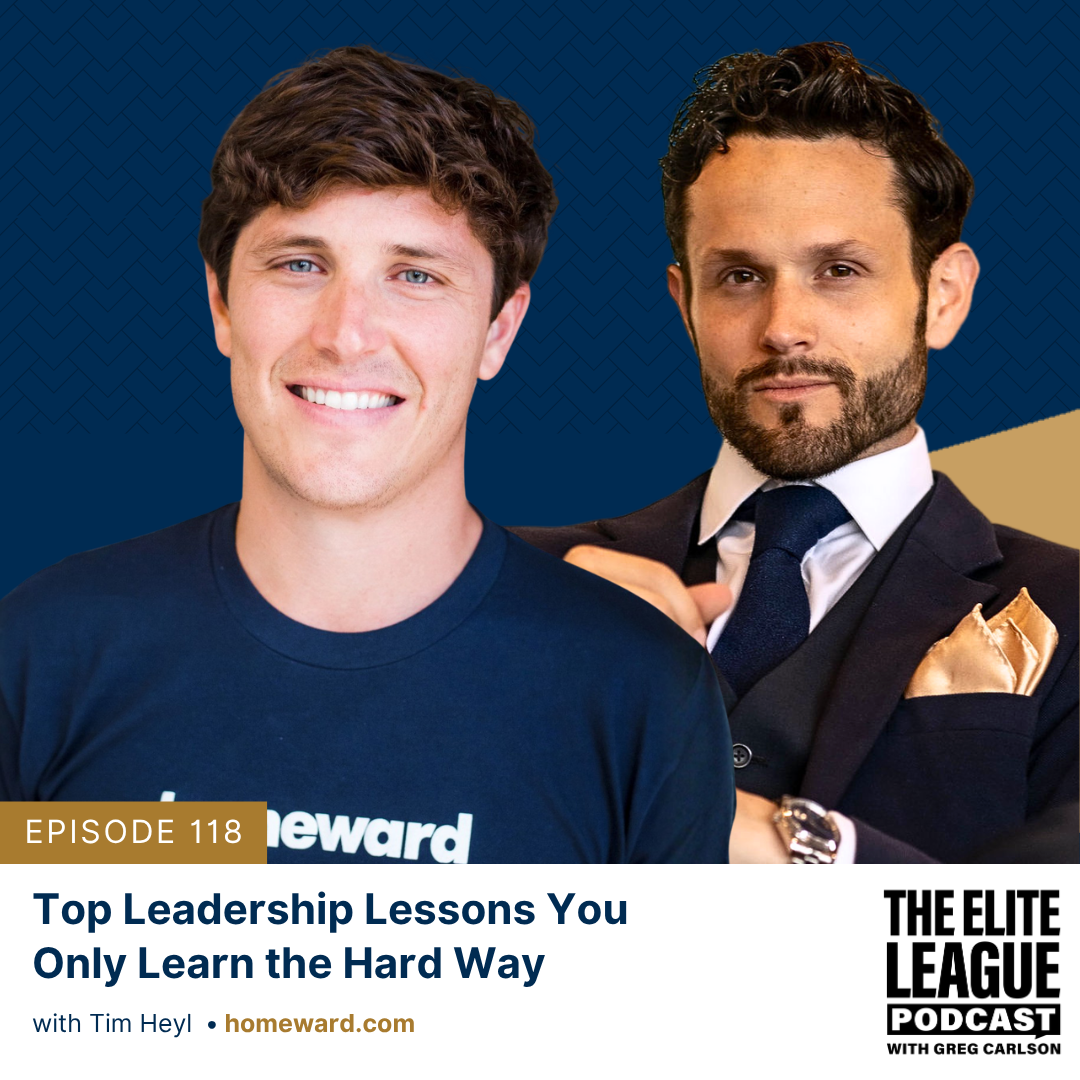Most entrepreneurs spend years grinding, hustling, and stretching themselves thin. They believe more output equals more success. But the people who grow the fastest, and sustain that growth, operate inside a different paradigm.
Their goal is not to do more.
Their goal is to create leverage.
Leverage is the discipline of multiplying your time, energy, and impact by strategically redirecting your money, attention, and people resources into the places that matter most.
It’s not about working harder.
It’s about working in a way that makes every hour you invest worth more.
This article breaks down a practical, executable roadmap any CEO or entrepreneur can apply to leverage their way into faster growth and more meaningful achievement.
This concept was discussed in The Elite League Podcast, where real estate entrepreneur Tim Heyl shared insights on building scalable systems, leadership clarity, and operational structure.
Watch the full conversation to learn the frameworks high-performing teams rely on to win.
What Leverage Actually Means in Business
Leverage is often misunderstood. People think it’s:
- outsourcing
- delegation
- hiring help
- automating tasks
- scaling operations
Those are only pieces.
Real leverage means using your resources to reduce low-value activities so you can double down on the one thing that produces disproportionate results.
In simple terms:
You take the money you earn, and instead of spending it on lifestyle, you convert it into time.
Time that lets you stay focused on the highest-return activities.

Why Most Entrepreneurs Stay Stuck
Many founders stay on a plateau because:
- they’re unwilling to let go of tasks
- they fear spending money on support
- they believe no one can do things “as well as they can”
- they confuse busyness with productivity
- they operate without clarity on what their highest-value activity is
The result?
They stay buried in operations.
They overwork but undergrow.
They burn out while trying to “do it all.”
Leverage is the antidote.

Step 1: Identify Your Highest-Value Activity
Every business has one primary driver of results.
For some leaders, it's:
- generating revenue
- forming partnerships
- leading high-level strategy
- product vision
- sales
- creative direction
- decision-making
For others, it’s something different.
But whatever your core activity is, it will always produce far more impact than anything else you do.
A simple exercise:
- Write down everything you do during a normal week.
- Highlight the top 10% of activities that drive the most income or strategic growth.
- Commit to doubling the amount of time you spend on only those activities.
That becomes your “one thing.”

Step 2: Audit Where Your Time Is Being Wasted
Most entrepreneurs lose hours every week to tasks that are important but not essential for them to personally do.
Examples include:
- scheduling
- emails
- admin coordination
- basic customer communication
- errands
- operational updates
- follow-ups
- reporting
These tasks matter. But they don’t move the leader forward.

Practical tool:
Track your time for 7 days.
Label each task:
- $10/hour task – low complexity
- $100/hour task – operational support
- $1,000/hour task – leadership and growth
- $10,000/hour task – strategic or revenue-generating actions
Your goal is to eliminate or delegate the first two categories.
Step 3: Reinvest Money Into People Who Multiply Your Time
This is where entrepreneurs struggle the most.
Hiring is not an expense.
It is buying time — which is the scarcest resource you own.
Start small:
- Hire a virtual assistant
- Contract project-based help
- Bring on a part-time operations coordinator
- Use specialists for marketing, design, or editing
- Delegate administrative work immediately
These hires buy back hours you can reinvest into your core strength.
Example:
A CEO pulling in $500k a year is worth at least $250 an hour.
If they spend even 10 hours a week on $20/hour tasks, that’s $2,300 of lost value weekly — over $120k per year.
Leverage is financial stewardship.

Step 4: Create Systems So Your Delegation Doesn’t Collapse
Hiring alone won’t save you.
You need systems that make delegation repeatable.
Build:
- processes
- checklists
- templates
- documented expectations
- simple workflows
- weekly sync rhythms
Systems turn your team into a multiplier, not an anchor.
When your team executes without constant correction, your time expands exponentially.

Step 5: Double Down on the One Thing That Drives Your Success
Once your time is freed, you must reinvest it strategically.
Do not fall back into busywork.
Use your reclaimed time to:
- improve your product
- lead your team
- innovate
- refine your craft
- deepen your pipeline
- build partnerships
- make long-term decisions
This is the moment where leverage pays off.
Most businesses plateau because the founder never steps into this stage.

Step 6: Repeat the Cycle as You Grow
Leverage is not a one-time decision.
It’s a leadership philosophy.
As your revenue expands, continue reinvesting into:
- higher-level talent
- automation tools
- strategic support roles
- professional coaching
- team development
Every round of leverage creates the next level of growth.
Real-World Example: When Leverage Changes Everything
A founder who handles every part of the business slows growth.
A founder who focuses on the one driver that moves the entire machine accelerates it.
Consider the difference:
Founder A:
- does the marketing
- handles the sales
- manages operations
- emails clients
- handles hiring
- responds to fires
They remain capped.
Founder B:
- delegates operational chaos
- invests in specialists
- spends 80% of the day on their top core strength
- hires people to protect and multiply their time
Their growth becomes exponential, not linear.
Practical Takeaways You Can Implement This Week
1. Identify your one high-value activity
Everything else orbits around it.
2. Track your time
Find your leaks.
3. Hire one support role
Start with the easiest tasks to offload.
4. Build one system per week
Even simple systems create compound returns.
5. Reinvest your freed time
Put your hours into the high-impact zone.
6. Treat leverage as a long-term strategy
Not a quick fix.
👉 Want more strategies like this? Subscribe to Elite League Mastermind, where we break down lessons from The Elite League Podcast and show you how to apply them directly to your business.











Member discussion